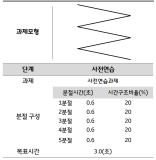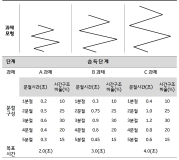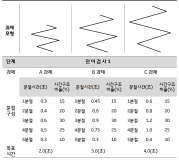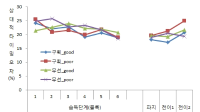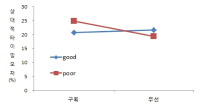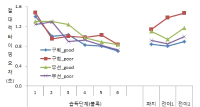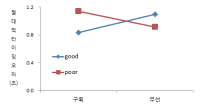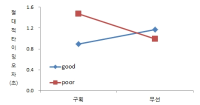Purpose The study was designed to investigate the effects of 12 weeks of circuit training and L-tryptophan supplementation on physical fitness and metabolic syndrome. Methods Forty-one menopausal women were randomly assigned to one of three groups. i.e., combined circuit training and L-tryptophan supplementation group (CT+T: n=14), L-tryptophan supplementation group (T: n=14), and control group (CON: n=13). The subjects in CT+T exercised three sessions per week and took 3g of L-tryptophan per day for 12 weeks. The subjects in T took 3g of L-tryptophan per day for 12 weeks. The subjects in CON were asked to maintain their life pattern for the same period of intervention. Physical fitness and metabolic syndrome-related variables were measured at pre- and post-test. The data were compared by utilizing a repeated two-way ANOVA. Results Main results of the study were as follows: 1) Standing long jump, one leg standing with eyes closed, sit-and-reach, sit-up, and maximal oxygen uptake increased significantly in CT+T. 2) Body weight, body mass index, waist circumference, waist-hip ratio, fat mass, and percent body fat decreased significantly in CT+T. 3) Total cholesterol decreased significantly in CT+T. 4) Fasting plasma glucose (FPG), fasting plasma insulin, and HOMA-IR decreased significantly in CT+T. FPG and HOMA-IR decreased significantly in T. 5) Systolic blood pressure, diastolic blood pressure (DBP), mean arterial pressure (MAP), and rate pressure product decreased significantly in CT+T. DBP and MAP decreased significantly in T. 6) Number of metabolic syndrome risk factors decreased significantly in CT+T and T. Conclusion It was concluded that the circuit training and L-tryptophan supplementation would have positive effects on physical fitness and metabolic syndrome, and that L-Tryptophan supplementation would have positive effects on metabolic syndrome by improving insulin resistance and hypertension in menopausal women.
Purpose This study was designed to examine the effects of a single corrective exercise (CEX) and corrective kinesio taping (CKT) on gait patterns, plantar pressure, balance, and pain in 20~30s female patients with moderate hallux valgus. Methods Twenty-one participants (age: 30.1±5.1 yrs; height: 164.1±4.8 cm; body weight: 56.7±6.8 kg; body mass index: 21.2±5.7 kg·m-2; hallux valgus angle: 27.2±6.1°) with hallux valgus was recruited and participated in three trials, i.e., CEX trial, CKT trial, and combined CEX and CKT (CEX+CKT) trial, repeatedly in a counter-balanced order. One week of wash-out period was placed between the trials to minimize the effect of the previous treatment on the next treatment. Variables related to gait pattern, plantar pressure, balance, and pain were measured during each treatment. We carried out repeated two way ANOVA on measured variables. Results 1) Regarding gait patterns, CEX treatment and CEX+CKT treatments showed significant increases in the length of patients strides, the single support line during the stance phase, and significant reduction of the cadence. 2) Regarding gait cycle, CEX treatment and CEX+CKT treatments showed significant reductions in the contact times of forefoot, midfoot, and heel. There was a significant reduction of double stance phase in CEX treatment. 3) Regarding foot pressure on gait, CEX+CKT treatments significantly increased the maximum pressure of midfoot and heel. CEX treatments significantly increased the maximum pressure of forefoot. 4) Regarding balance, CEX treatment and CKT treatments significantly increased one leg standing with eyes closed. 5) Pain was significantly reduced in CKT treatment and CEX+CKT treatments. Conclusions According to the aforementioned results, it was concluded that a single CKT treatment was effective in reducing pain when walking and that plantar pressure, gait pattern, gait cycle, and balance were improved through a single bout of CEX treatments. Therefore, treatments by stage, starting with CKT treatments to reduce the pain, and then treating CEX to improve the gait pattern, gait cycle, foot pressure when walking, and balance ability, would be effective. Future research is warranted to identify the effects of long-term treatments.
Purpose The purpose of this study was to examine the effects of 16 weeks’ combined exercise training on insulin resistance, inflammatory markers, oxidative stress, leukocyte telomere length, body composition, and daily living fitness in elderly women with type 2 diabetes mellitus (DM). Methods Twenty-eight participants were randomly assigned into one of two groups, i.e., exercise training group (EX: n=14) and control group (CON: n=14). Subjects in EX participated in 3 sessions of 60 min-combined exercise for 16 weeks, whereas subjects in CON were asked to maintain their normal life pattern during the same period. The variables regarding insulin resistance, inflammatory markers, oxidative stress, leukocyte telomere length, body composition, and daily living fitness were measured and compared between two groups as well as between pre-post test utilizing a repeated two-way ANOVA. Results Main results were as follows: 1) Fasting plasma insulin and HOMA-IR tended to decrease in EX, whereas increased significantly in CON. 2) IL-6, TNF-α, hs-CRP decreased in EX, but the changes were not statistically significant. 3) MDA increased significantly and GPx decreased significantly in both EX and CON. 4) Leukocyte telomere length increased significantly in EX. 5) Fat-free mass increased in EX, whereas fat mass and percent body fat decreased significantly in EX. 6) Arm curl, chair stand, sit & reach, tandem test, 10m walking speed, and up & go improved significantly in EX. Conclusion It was concluded that the combined exercise for 16 weeks had a positive effect on improving insulin resistance, increasing leukocyte telomere length, as well as enhancing body composition and daily living fitness in elderly women with type 2 diabetes.

Purpose The present study explored biological autonomy and control of function in circumstances that assessed a presumed relationship to an environmental cycle. An understanding of this behavior appeals to the organism-environment system rather than simply the organism—we seek to expose the laws that underlie end-directed capabilities by measuring biological characteristics (motor synchrony) in an environmental cycle (circadian temperature). Methods Participants (n = 24) at the University of Connecticut (Storrs, USA) and the Seoul National University (Seoul, Korea) served in the study. The production of in-phase bi-manual coordination was examined at different circadian points (allowing comparison of day-night temperature effects) in two experimental designs; (1) normal temperature embedded in a 24 hour cycle (5:00, 12:00, 17:00, and 24:00), and (2) normal versus abnormal temperature [artificially decreasing or increasing] while embedded at two points (5:00 am, 5:00 pm) during the circadian process. A typical bi-manual stability measure varied significantly as a function of the day-night temperature cycle. Results While (i) circadian effects under the artificially perturbed temperature manipulation were not straightforward along the day-night temperature cycle, (ii) the circadian effect divided by the ordinary circadian seems to be constant along the day-night temperature cycle. Conclusions The discovery of direct and robust relation between biological aspects (body temperature and motor synchrony) an environmental process (circadian temperature cycle) may echo adaptation of our biological system to the environment. This relation supports the claim that the organism and the environment should be considered as integrated system in which biological (or physical) dynamics takes place as a mutual factor.


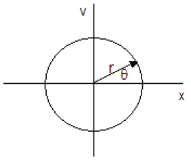

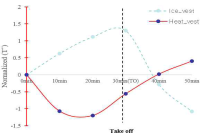

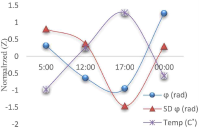

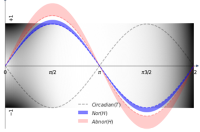
Purpose The purpose of this study was to investigate the effect of a 10-week aerobic exercise training on cardiovascular function, atherosclerosis, and vascular endothelial function in elderly women. Methods Twenty impaired fasting glucose (IFG) and normoglycemic elderly women volunteered to participate in the study. The participants in aerobic exercise training group (TR: n=9) completed 20-40 minutes of aerobic exercise program at 30-50% HRR for 3 times per week during 10 weeks. The participants in control group (CON: n=11) were asked to maintain their normal life pattern during the same intervention period. Results Main results of the study were as follows: 1) There were no significant main effect or interaction in body weight, fat-free mass, fat mass, percent body fat, and body mass index. 2) There were no significant main effect or interaction in heart rate, stroke volume, cardiac output, total peripheral resistance (TPR), systolic blood pressure, diastolic blood pressure, mean arterial blood pressure, pulse pressure, and rate pressure product. However, interaction between group and test in TPR was close to statistically significant level (P =.054), and it tended to be decreased in TR group. 3) There was a significant main effect of test in high sensitivity C-reactive protein(hs-CRP), it tended to be decreased in TR group. There were no significant changes in total cholesterol(TC)/high density lipoprotein-cholesterol (HDL-C) ratio, triglyceride/HDL-C ratio, and low density lipoprotein-cholesterol/HDL-C ratio. 4) There were significant main effect of group, main effect of test, as well as interaction between group and test in % flow mediated dilation(FMD), and it increased significantly (P<.01) in TR group. Nitric oxide tended to be increased in TR group, even though it did not change significantly in both groups. Conclusions It was concluded that the 10-week aerobic exercise training would be beneficial for improvement of vascular endothelial function, resulting from the decrement of total peripheral resistance.

Purpose The purpose of this study was to evaluate the effect of detachable forefoot outsole on muscle activity of the lower extremity during downhill walking. Methods Thirteen male university students (age: 23.5±2.1 yrs, height: 175.7±4.6 cm, weight: 651.9±55.5 N) who have no musculoskeletal disorder were recruited as the subjects. Each subject walked down 20° ramp with forefoot’s design for the detachable outsole’s angle(5°, 10° and 20°) and type(A and B). To assess the myoelectric activities of selected muscles, six of surface EMG(QEMG8, Laxtha Inc. korea, sampling frequency = 1,024 Hz, gain = 1,000, input impedance > 1012 Ω, CMRR > 100 dB) electrodes with on-site pre-amplification circuitry were attached to ES, RF, BF, TA, LG, and MG. For each dependent variable, two-way ANOVA with repeated measures was used to determine whether there were significant differences among forefoot’s design for the detachable outsole’s angle and type (p<.05). When correlation effect was not statistically significant, post hoc analyses were performed using the multiple comparison through bonferroni, and if correlation effect was statistically significant, one-way ANOVA was performed as for the form of outsole which is an inter-group variable in order to find out simple main effect, and the paired t-test was performed to find out the angle of outsole, which is an intra-group variable. Results In IDLS phase, In terms of Rectus Femoris, 10°-B outsole showed statistically higher muscle movement than 5°-B, 5°-A outsole showed statistically higher muscle movement than 5°-B, 20°-A outsole showed statistically higher muscle movement than 20°-B. Among these outsoles, Conclusion 5°-B outsole was found to the most useful outsole for improving stability and controlling the bodily movement due to the body weight load when walking down the ramp.








Purpose This study is a phenomenological research which tries to describe the subjective experience and to analyze multi-layered meanings, and it finds out the men's training experience and meaning. The purpose of this study is to investigate why the men do Yoga and what the subjective meaning of Yoga experience, and the study examines critically whether Yoga experience especially focused on women is against gender performance and dominant body discourse. Methods For the study, 6 middle & young-old aged men who do Yoga more than 6 months every week are selected as participants. Results The meaning of Yoga for middle & young-old aged men in their lives is as follows. First, it is hard for men to experience Yoga because of social and cultural background. Finding Yoga class which takes men's membership is difficult. Second, middle & young-old aged men's physical feature(interest in their health and disease) and personal background(women friendly daily life) become specific motivation to overcome the barrier to do Yoga. Third, Yoga is 'alterative training', not a training. Yoga is considered as a training which replaces the feature of training called men's sports previously. Fourth, Yoga has a meaning of 'healing' to have our own time. Fifth, Yoga is changed by itself in Yoga culture which is focused on women even though middle & young-old aged men do Yoga for a long time. Sixth, middle & young-old aged men realize that the feature of Yoga is not 'for only women', and they thought it is 'neutral training that men can do too.' Conclusion Consequently, the reason why middle & young-old aged men do Yoga is started from the motivation regarding physical characteristics and personal background, and the main purpose is to cure and to heal our bodies and mind. For them, Yoga means 'alternative training to fit their bodies' and 'their own time'. Moreover, old male adult's training experience and meaning are against gender performance in that it cause a crack in stereotyped gender sports area, but it is notable that there is no intention to resist the dominant gender body discourse.

To provide the distribution of cardiorespiratory fitness including Bruce treadmill exercise time and estimated peak oxygen uptake (VO2peak) and investigate association with cardiorespiratory fitness and metabolic syndrome, sedentary lifestyle, or education level among Korean adults. Analysis of data on 2,006 adults (19-64 yr) who had completed a maximal grade treadmill exercise test, from the Sports Institute of Sports Science Fitness Standards (KISS FitS) project 2014-2015. The mean maximal exercise time was 11’26’‘, 11’18’‘, 11’06’‘, 10’03’‘ and 8’51’‘ (minutes and seconds) for men 19-29, 30-39, 40-49, 50-59 and 60-64 years of age, respectively, for women, it was 9’49’‘, 9’09’‘, 8’42’‘, 8’01’‘ and 7’33’‘ for the corresponding age groups. The mean peak oxygen uptake was estimated as 42.3, 41.8, 41.2, 37.6 and 33.6 ml/kg/minute for men 19-29, 30-39, 40-49, 50-59 and 60-64 years of age, respectively, For women, it was 34.0, 31.8, 30.3, 28.0 and 26.4 ml/kg/minute for the corresponding age groups. A positive association between cardiorespiratory fitness level and education level was observed for both men and women. Furthermore, participants with sedentary lifestyle had a significantly lower cardiorespiratory fitness than participants with activity lifestyle. Finally, Men with moderate and high fitness level had 50% and 87% lower odds for the metabolic syndrome, and women had 48% and 50% lower odds for the metabolic syndrome, respectively, than the ones with low fitness level after adjustment for age, smoking, alcohol intake, and sedentary lifestyle. These results can be used to track future Korean assessments and to evaluated interventions. The differences in fitness status by education level, sedentary lifestyle or metabolic syndrome can also be used to develop health policies, program and educational services.

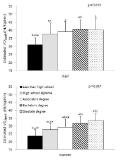
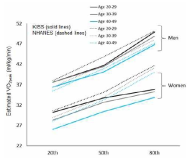
The purpose of this study was to investigate the effects of 8 weeks of aerobic training and resveratrol supplementation on a body composition, physical fitness, insulin resistance, liver function, blood pressure, and heart rate. Fifty-one elderly women were randomly assigned to aerobic training group (EX: n=12), resveratrol supplementation group (R: n=13), combined aerobic training and resveratrol supplementation group (EX+R: n=12), and control group (CON: n=14). The subjects in EX group exercised three sessions per week, 40 minutes per session for 8 weeks, the subjects in R group took 500 mg of resveratrol per day for 8 weeks, and the subjects in EX+R group received both treatments. The subjects in CON group were asked to maintain normal daily life pattern without any treatment for the same period of intervention. Body composition, physical fitness, insulin resistance, liver function, blood pressure, and heart rate were measured at pre- and post-test and the data were compared among groups and between tests by utilizing two-way ANOVA with repeated measures. Main results of the present study were as follows: 1) Physique and body composition did not change significantly in all groups. 2) Muscular endurance increased significantly in EX+R group, whereas the other physical fitness-related variables showed no significant changes in all groups. 3) Fasting glucose, fasting insulin, HOMA-IR, and HbA1c tended to be improved in EX+R group. 4) AST, ALT, and γ·GT showed no significant changes in all groups. 5) Systolic blood pressure and diastolic blood pressure increased significantly in CON group. Heart rate tended to be decreased in EX+R group and EX group. It was concluded that the 8 weeks of aerobic training and resveratrol supplementation had positive effects on muscular endurance, insulin resistance, and blood pressure in T2DM elderly women. Research investigating the effects of a longer period of aerobic training and resveratrol supplementation on the same variables would be warranted in the future.
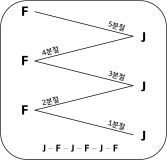
The present study was conducted to determine the effect of contextual interference (CI) and motivational properties (MP) of Knowledge of Result (KR) in learning on relative and absolute timing. Participants (N=48) were randomly assigned to one of four practice groups, which differed in practice structure on CI (blocked, random) and KR on MP (good trial, poor trial). They performed temporal timing tasks in pre-exercise and acquisition phase and went through a retention test and 2 transfer tests after approximately 24 hours. The main findings showed that first, for the relative timing error there was no significant main effect of CI and MP in the acquisition phase, retention, transfer1, and 2 test. However, there was a significant interaction effect between CI and MP in the transfer 2 test. Second, for the absolute timing error there was no significant main effect of CI and MP in the acquisition phase, retention, and transfer test 2 while there was in the transfer test 1. Moreover, there was a significant main effect between CI and MP in the retention, transfer 1, and 2 test. The findings indicated that 1) there was a significant learning effect of absolute timing between KR_good group and KR_poor group on blocked practice in the retention test, 2) random practice schedule and KR_good condition resulted in enhanced absolute timing performance relative to blocked practice and KR_poor respectively at transfer test 1, 3) there was a significant learning effect of absolute timing between KR_good group and KR_poor group on blocked practice at transfer test, 4) KR_good condition could be an useful relative timing learning strategy relative to KR_poor on blocked practice schedule at transfer test 2, effector transfer test. KR-good condition resulted in learning superior to KR_poor group on blocked practice schedule as well. However, there was no significant difference between two conditions on random practice, and 5) there was no difference in the learning effect of absolute timing error between KR_good and KR-poor group in the blocked practice, while there was not in the random practice. It indicated that motivational properties would influence the learning effect of timing in the blocked practice.

